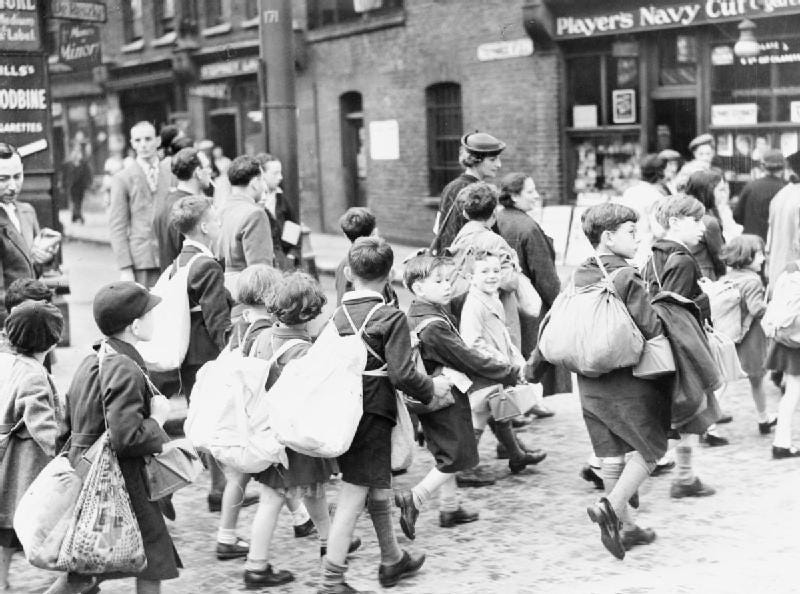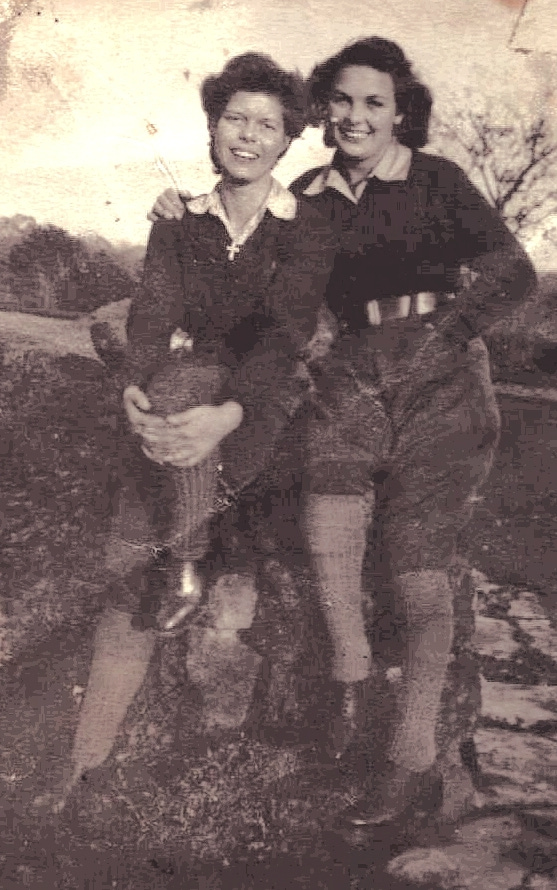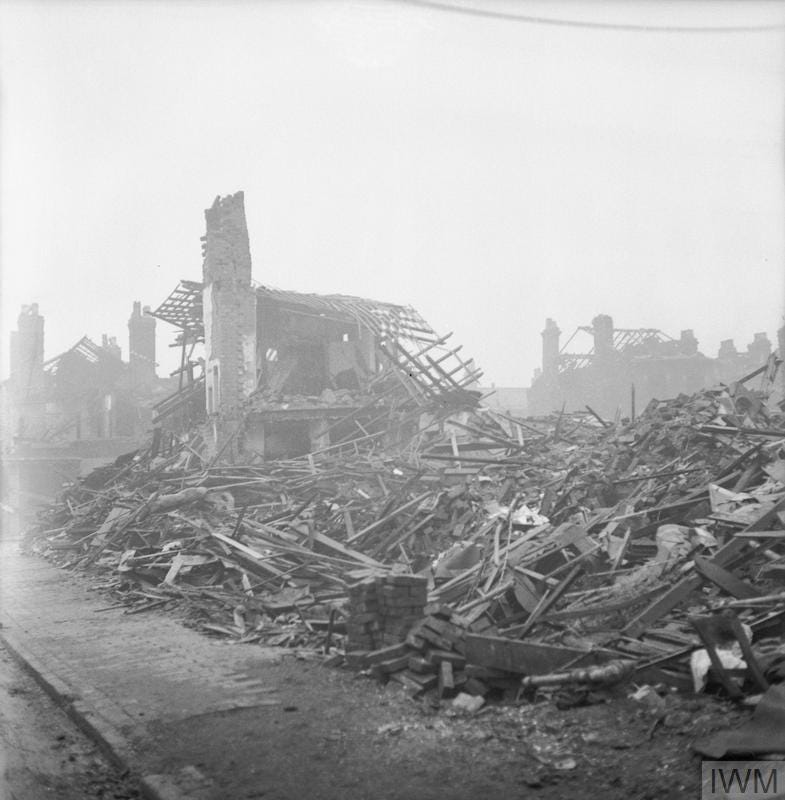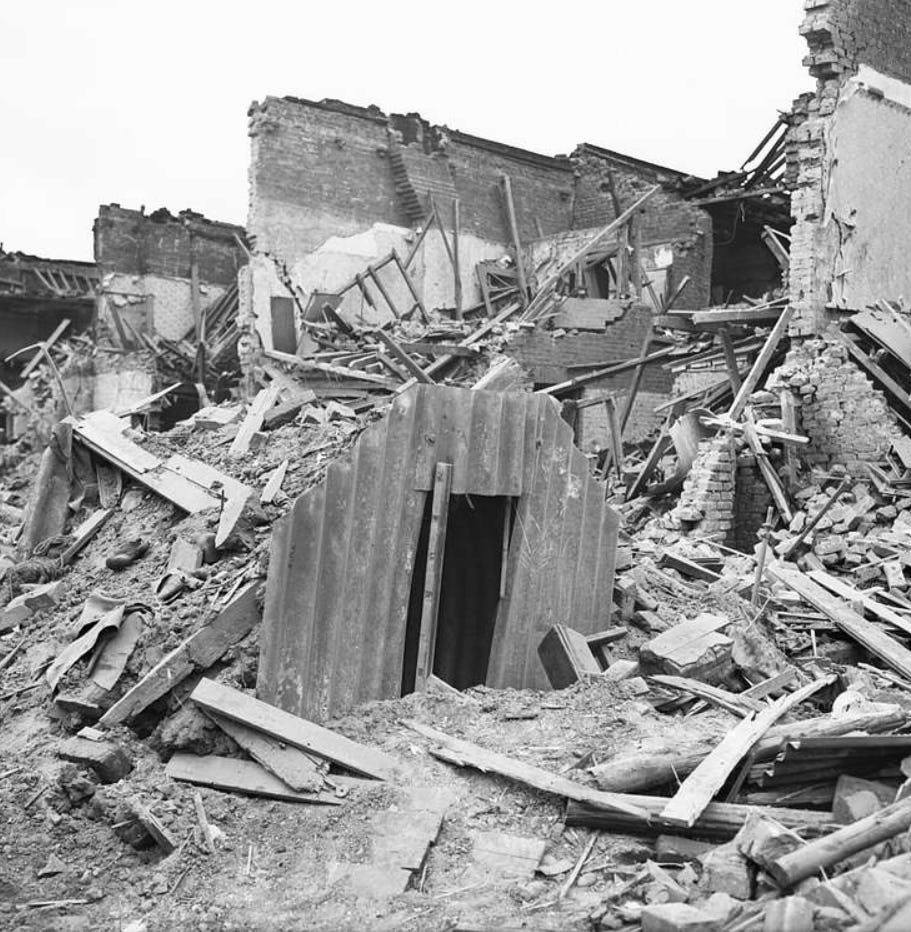A Time of Exception, A Time of Faith
The organisation of the Kingstanding branch in the middle of World War 2 shows the role Latter-day Saints can play in the building of the Kingdom of God on earth
When World War 2 broke out in September 1939, Dora Harman was only eleven years old. The third-generation member of The Church of Jesus Christ of Latter-day Saints was one of five children born to Thomas and May Harman who lived in Birmingham, England. May had been raised in the church while Thomas converted in 1926, several years after their marriage. Together they raised their children in their home in Birmingham where they taught and believed in the Restored Gospel.
When news of the declaration of war came out Dora and her peers were somewhat excited, not realising what it fully meant. Part of the excitement was in thinking the German army would march down the road at any time. But she could tell the older generation, those who had lived through the First World War, were sad knowing the pain and hardships that were to come, again.
Soon the sound of spades turning over soil in gardens could be heard across the city as families, including Dora’s, built Anderson shelters to protect themselves from air raids. Given Birmingham’s size and industrial output it was expected that the Germans would try to strike the country’s second-largest city.
But there were also other plans and preparations that had long been prepared for. In 1938 plans to evacuate children from cities had been devised in preparation for any outbreak of hostilities.1 The goal was to move children from danger zones into homes in rural countryside areas and small towns where they would be billeted by those with spare rooms.2
Evacuees
Dora and three of her siblings were among the first of the 3.7 million people who were relocated as part of the evacuation effort, with 1.5 million of those taking place in the first three days of the plan. Dora and her siblings assembled at a school with their parents watching on. She watched as lines of small children labelled with names and addresses stood waving goodbye to their parents.
After a tearful farewell to her own parents and with a gas mask around her neck, Dora stood in the school playground carrying her possessions in carrier bags. When everyone was ready, she, her siblings, and the other children walked in an orderly manner to nearby Bordesley Railway Station. There they boarded a train to the quaint and scenic town of Stratford upon Avon. On arrival, they were taken to a school for collection by their hosts. As other children left, Dora remained at the school watching on and probably wondering when she would get collected. Eventually, a lady arrived for Dora and her sister Sheila and took them to her home where she lived with her own children. Meanwhile, Dora’s other sister, Jean, and her brother, Bob, lived with different families on the same road.

Like many other children, Dora and her siblings missed home and particularly their parents. On Sundays, Dora’s mother, May, would visit the children and spend time with them. There was tension, at times, as the children lived in someone else’s home and adjusted to a new way of life, but they were safe and able to continue their schooling in peace.
Eventually, however, after about a year with some upsets and homesickness, May decided to take the children home. Their Anderson shelter in the garden and the desire to be together had caused them to overcome their fear of death or injury.
The Air Raid
With schools in Birmingham closed on account of the evacuation Dora and her siblings had to do the best they could. In November 1940, not long after returning to Birmingham, Dora and her family lived through one of the city’s most destructive air raids.
That November, German bombers undertook a massive raid of the Midlands. In one air raid, Coventry had been ravaged in a devastating eleven-hour-long attack leaving hundreds dead and many more injured and homeless. A week later Nottingham was also attacked.
One evening, Dora’s father was already at work at a factory where he worked as a spotter and her mother was out on an errand. Dora and her four siblings had been preparing to head out to the Anderson shelter where they slept every night when the sound of enemy planes came overhead. They hurried a little faster and tumbled into the shelter. Moments later their mother arrived and closed the shelter behind her. Suddenly, a loud roar roared out as high explosive bombs fell nearby.3 A short time later there was an immense explosion close by. The blast's force lifted the front of the Anderson shelter with a blinding light bursting out. The metal sheets from the front of the shelter landed on the ground again and rubble and debris began raining down on the shelter.
Twelve-year-old Dora knew her home had been hit as the deafening explosion had been so close. As the debris stopped raining down May tried opening the shelter door but it didn’t work, it was stuck. Dora’s brother, Bob, tried opening the escape hatch at the back but it too was stuck.
“What shall we do next?” Dora’s mother wondered out loud.
Sheila, Dora’s youngest sister, was only five years old at the time, but she quipped, “Shall we have a prayer?” A prayer was then said. Sheila also recited a little rhyme she had learned from a playmate:
God is our refuge,
Be not afraid;
He will be with us
In every air-raid.
Bombs may be dropping,
Danger be near;
He will be with us
Until the all-clear.4
Meanwhile, mayhem continued outside. The sounds of machine guns firing at enemy bombers, wailing sirens, explosions, the roar of British Spitfires trying to bring down bombers, and the sounds of raging fires continued outside, but they were stuck inside their metal tomb, buried under rubble and debris. All they could do was wait.
For hours Dora and her family remained in the shelter unable to leave. Finally, voices could be heard calling out. “Are you alright?” “Can you hear us?” “Call if you can!” “We are going to get you out!” As they yelled back in reply, the voices became clearer and clearer until eventually the door opened and lights shone down on Dora and her family. One by one they were plucked out of the shelter into the middle of the dark November night.
Dora looked out at an apocalyptic scene. Their home, and those of their neighbours, were entirely erased. Only rubble remained. Meanwhile, bombers were still unleashing destruction on the city with fires burning everywhere. The brave rescue workers had worked despite the risk of death or injury to dig the family out of their shelter. Unknown to Dora at the time, there was also a dangerous gas leak from the ruined houses.
Dora learned that a friend and neighbour of hers, Norma Grinsell who was nine years old, had been killed along with her mother, Emily. Norma’s six-week-old brother, Sammie, had only survived because Emily shielded him with her body. The badly injured father had then told them about Dora and her family and workers had subsequently rescued them. It was a miracle they had been found.
Wearing only their night clothes, Dora and her family were taken to an air raid shelter near a pub while the raids continued. The next morning Dora was reunited with her father. He had been told that six people had died in their yard after he had returned home from work to find it destroyed. Family stories relate that his hair turned white that night. Despite the shock and the worry, the family was alive and well.
The Kingstanding branch
Dora’s family were now homeless having lost virtually everything they owned. After the air raid, civic authorities in Birmingham began requisitioning empty houses, trialling communal feeding, and expanding hostels to accommodate those being made homeless by the air raids.5
It wasn’t long, however, before Dora’s family was given a home to live in by the City Council in the Kingstanding area of Birmingham. Dora was filled with joy with their new home. It had three bedrooms, a garden out front, a boiler in the kitchen, a bathroom and even their own toilet. They would no longer have to share an outside toilet with other families.
Although the house was lovely, it was now quite a distance to the nearest Latter-day Saint congregation in Sparkbrook. There were a few other Latter-day Saint families in the area too and before long a Sunday School was organised. Many of those members were men and women who had joined the church in the 1920s. These new members could have become preoccupied with their own lives and circumstances and have their religion fade into the background, but they remained committed to their faith.
In January 1942, as the Sunday School progressed a Primary was organised as was a Scout troop.6 Eventually, it was made into a branch on 30 July 1942 with Walter Green, a second-generation Latter-day Saint, sustained as the president. A year later, in September 1943, Walter was replaced by Bertram Stokes who then served until September 1945. The Saints met in several locations including 1 Orpington Road and then in the Peckham Road Schools.
Over the following months, the Saints faithfully tried to fulfil their duties while living through the hardships caused by the war. On Christmas Day 1942, the branch Sunday School held a Christmas Service with an attendance of 55 people. The children sang “When Christ was born in Bethlehem” with a duet and piano performance. Members and leaders from other congregations often visited the branch to speak as they did that Christmas Day. At the end of the meeting gifts were given to thirty-six children for “regular attendance”.7
Lantern lectures, themed presentations, and other activities were held.8 Members tried to show kindness and generosity wherever they could. One Easter Sunday Walter and Doris Green provided eggs attractively wrapped in cellophane which were distributed to the twenty-seven members and friends present.9
In 1943, the Church’s Scout troop attended and participated in a parade at the Kingstanding Congregational Church for a Memorial Service held in honour of Lord Baden-Powell who had founded the movement. The 269th Birmingham, Kingstanding, M.I.A. Troop of Boy Scouts was ably led by Edward Garradley-Armstrong, a fairly recent convert to the Church, and District Scoutmaster Bertram Stokes, who was a prominent member and leader of the branch, was also in attendance.10 The Scout group continued to grow from strength to strength and in 1945 the following notice was published in the Millennial Star:
PLEASE HELP ! A FINE ORGANISATION OF SCOUTS HAS BEEN FORMED IN THE KINGSTANDING BRANCH AND IS DOING AN OUTSTANDING JOB OF WORK IN THAT AREA. ITS LEADERS ARE SPONSORING A MOVEMENT TO ORGANISE A BAND. THE MISSION AUTHORITIES ARE SUPPORTING THIS ENDEAVOUR AND ARE ANXIOUS TO ASSIST IN PROCURING BAND INSTRUMENTS. WE SHALL APPRECIATE INFORMATION LEADING TO SUCH, AND WOULD BE GRATEFUL IF YOU WOULD INFORM THE "STAR" OFFICE AT ONCE.11
The Amalgamation
In 1945, as Hugh B. Brown returned to preside over the British Mission he undertook a controversial course of action. Across the country there were small congregations meeting as best they could while the women of the church balanced multiple competing pressures and many of the men served away at war.
A special meeting was held on Sunday 16 September 1945 for the Birmingham District. The Sparkbrook, Handsworth, Tipton, and Kingstanding branches were amalgamated into one congregation called the Birmingham branch. The nearby Kidderminster and Wolverhampton branches were also merged temporarily. Meanwhile, Nuneaton and Northampton continued as independent congregations.12 Attendance was usually around 70, but there would have been people unable to attend the central location. The advantage of more, smaller congregations was that it increased the number of people able to meet together by taking the church to the people. Although this meant more work and heavy loads of local leaders it was generally preferred to meet locally.13 In due course the course of action was reversed and as North American missionaries returned to the British Isles
The branch functioned for several years but what good did it do? Some of the children taught in the Kingstanding Primary later served as leaders in the church, including future bishops. Many of those children remained firm in the faith and now have multiple generations of descendants who are members of The Church of Jesus Christ of Latter-day Saints. It served its purpose at that time and although there are differences in opinions about the utility of the 1945 amalgamation, the branch was reopened a few years later and there are still members of the church in the area today.
In April 2022, Russell M. Nelson, president and prophet of The Church of Jesus Christ of Latter-day Saints announced the Birmingham England Temple, almost eighty years after the Kingstanding branch had been formed. In the years following, Latter-day Saints, such as Dora, made tremendous contributions to their church and community as a result of their testimonies of the Restored Gospel. That belief, that commitment, was helped along by Dora and her family opening their home to their fellow Saints to meet in and where the Kingstanding branch was formed.

This story is one that will be included in a book I am writing about The Church of Jesus Christ of Latter-day Saints during the Second World War.
‘Evacuation of Children,’ Lancashire Evening Post, 25 November 1938, p. 6.
‘Evacuating Children,’ Portsmouth Evening News 29 July 1938, p. 4.
Dora Shaw, oral history, 19 August 1986, p. 3, CR 884 54, CHL.
Frederick Webb, ‘“And A Little Child Shall Lead Them,”’ Millennial Star, Vol. 103, No. 6 (1941), p. 87.
‘Mass Raid on Midland Town,’ The Birmingham Post, 25 November 1940, p. 3.
‘District Activities,’ Millennial Star, Vol. 105, No. 6 (1942), p. 91.
‘District Activities,’ Millennial Star, Vol. 105, No. 5 (1942), p. 78.
‘Our Missionaries Page,’ Millennial Star, Vol. 105, No. 3 (1943), p. 45.
‘District Activities,’ Millennial Star, Vol 105, No. 15 (1943), p. 379.
‘District Activities,’ Millennial Star, Vol 105, No. 15 (1943), p. 379.
‘Please Help!’ Millennial Star, Vol. 107, No. 1 (1945), p. 1.
‘British Mission Activities,’ Millennial Star, Vol. 108, No. 1 (1946), p. 18.
E. John S. Jones, ‘Report on Birmingham,’ Millennial Star, Vol. 109, No. 6 (1947), p. 169.




